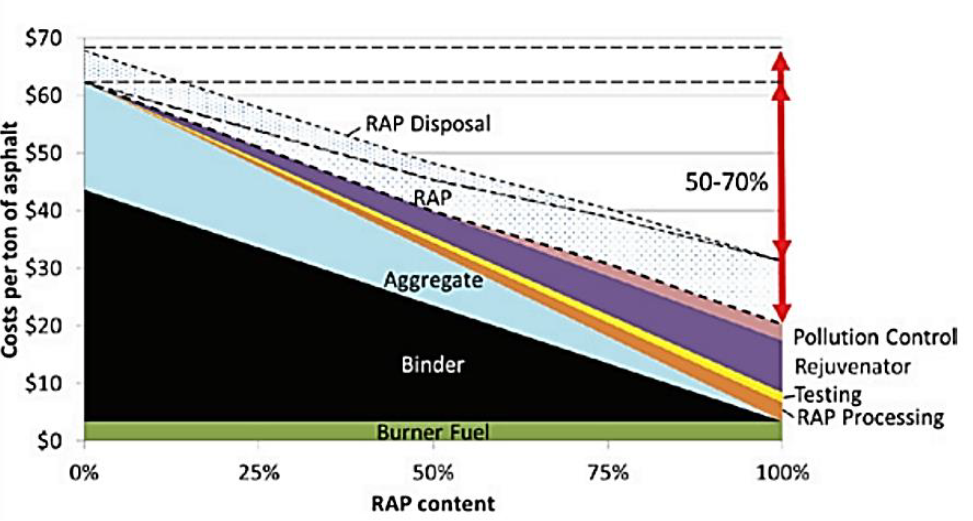The NCDOT mixture design procedure assumes 100
percent of the binder contained within reclaimed asphalt pavement (RAP) and recycled
asphalt shingles (RAS) is available for blending with virgin asphalt. However,
the literature shows that this assumption is flawed due to the presence of
recycled asphalt material (RAM) agglomerations that prevent complete recycled
binder availability (RBA). As a result, RAM mixtures designed using current
practices may suffer from an inadequate amount of virgin asphalt, rendering
them susceptible to cracking. Furthermore, past research highlights significant
variability in the rheological properties of RAP and RAS stockpiles across
North Carolina.
Correspondingly, the objectives of this study were to: (1)
modify the NCDOT’s procedures for the design of surface mixtures containing RAP
and RAS to improve performance, and (2) modify the NCDOT’s current
specifications to improve the consistency of RAP and RAS mixtures.

Effect of RAP content on cost of asphalt mixtures (Zaumanis and Mallick 2016)
To meet these objectives, a literature review was conducted that identified two approaches for addressing partial RBA in mixture design: the corrected optimum asphalt content (COAC) method specified by Georgia DOT and the availability adjusted mixture design method (AAMD) developed in NCDOT RP 2019-21. A review of plant operations was conducted to identify the range of RAP and RAS management and characterization processes in the state and select six plants to include in the experimental plan. ‘Control’ mixture designs were then identified from each of the selected plants for evaluation. The control mixtures correspond to approved Job Mix Formulas (JMFs) and thus, reflect mixture designs prepared according to current NCDOT practices. The control mixture designs were redesigned according to the COAC and AAMD approaches.
The performance of the control and redesigned mixtures were evaluated through laboratory testing and pavement performance simulations. The COAC and AAMD methods produced mixtures with enhanced cracking performance compared to control mixtures. The COAC approach yielded negative consequences on asphalt mixture rutting susceptibility compared to the current practice. In contrast, the AAMD method, which addresses the role of RAM agglomerations on both RBA and aggregate structure, resulted in rut depths similar to the respective control mixtures for mixtures prepared with fixed RAP content. Consequently, the research team recommends that the NCDOT consider adopting the AAMD method for designing surface mixtures.
